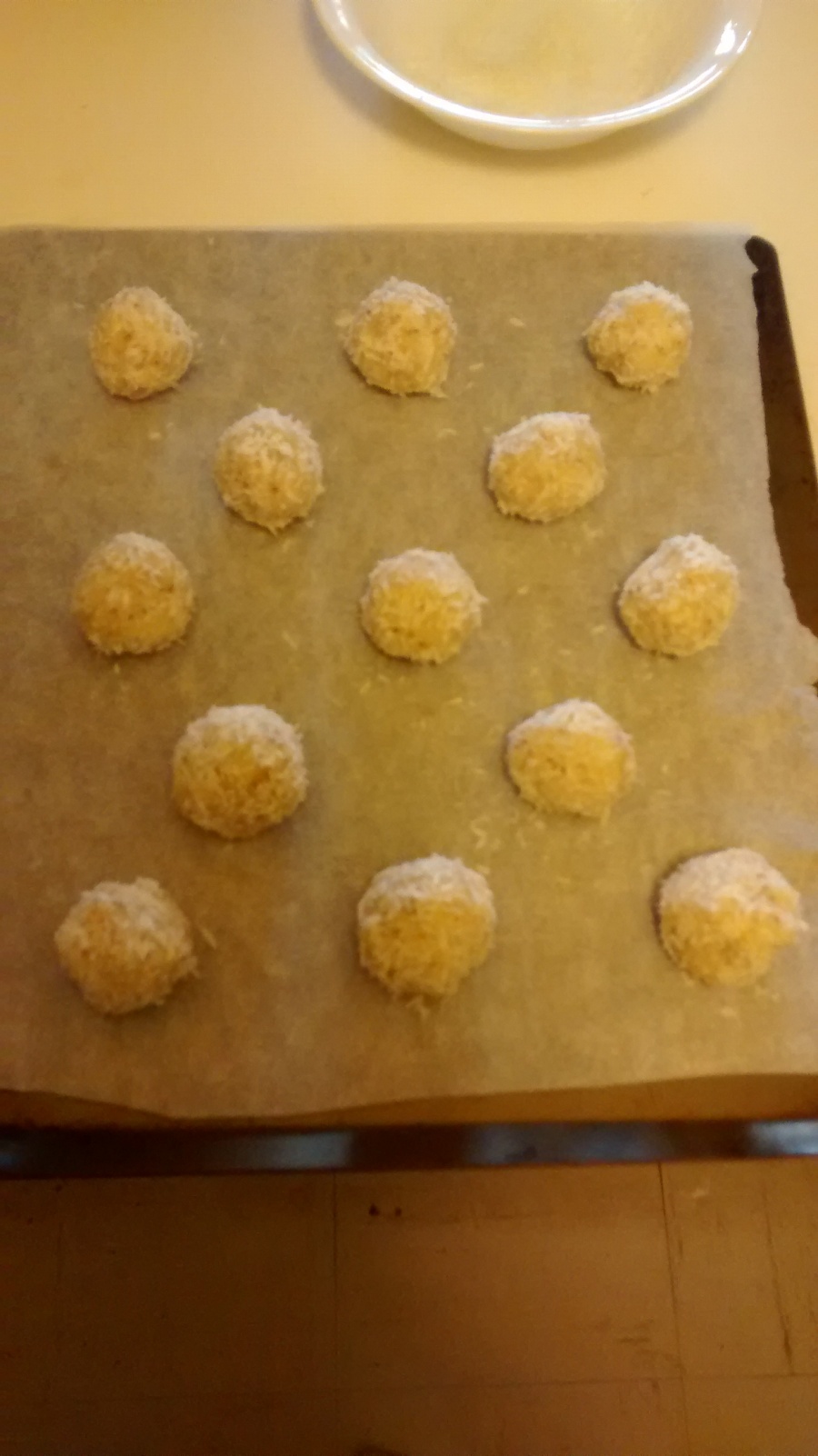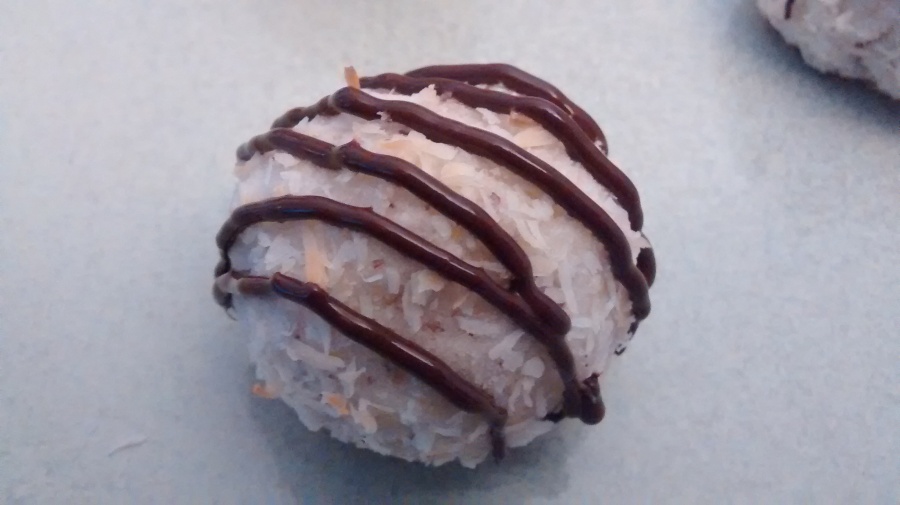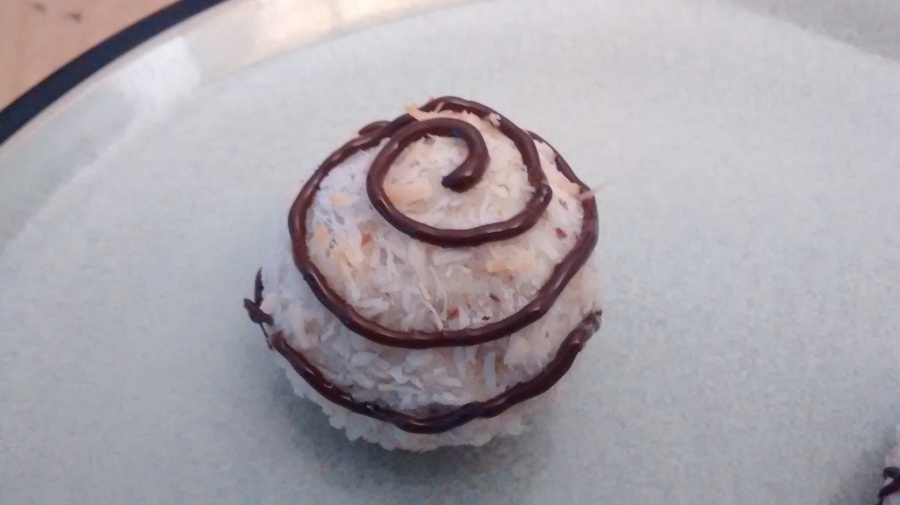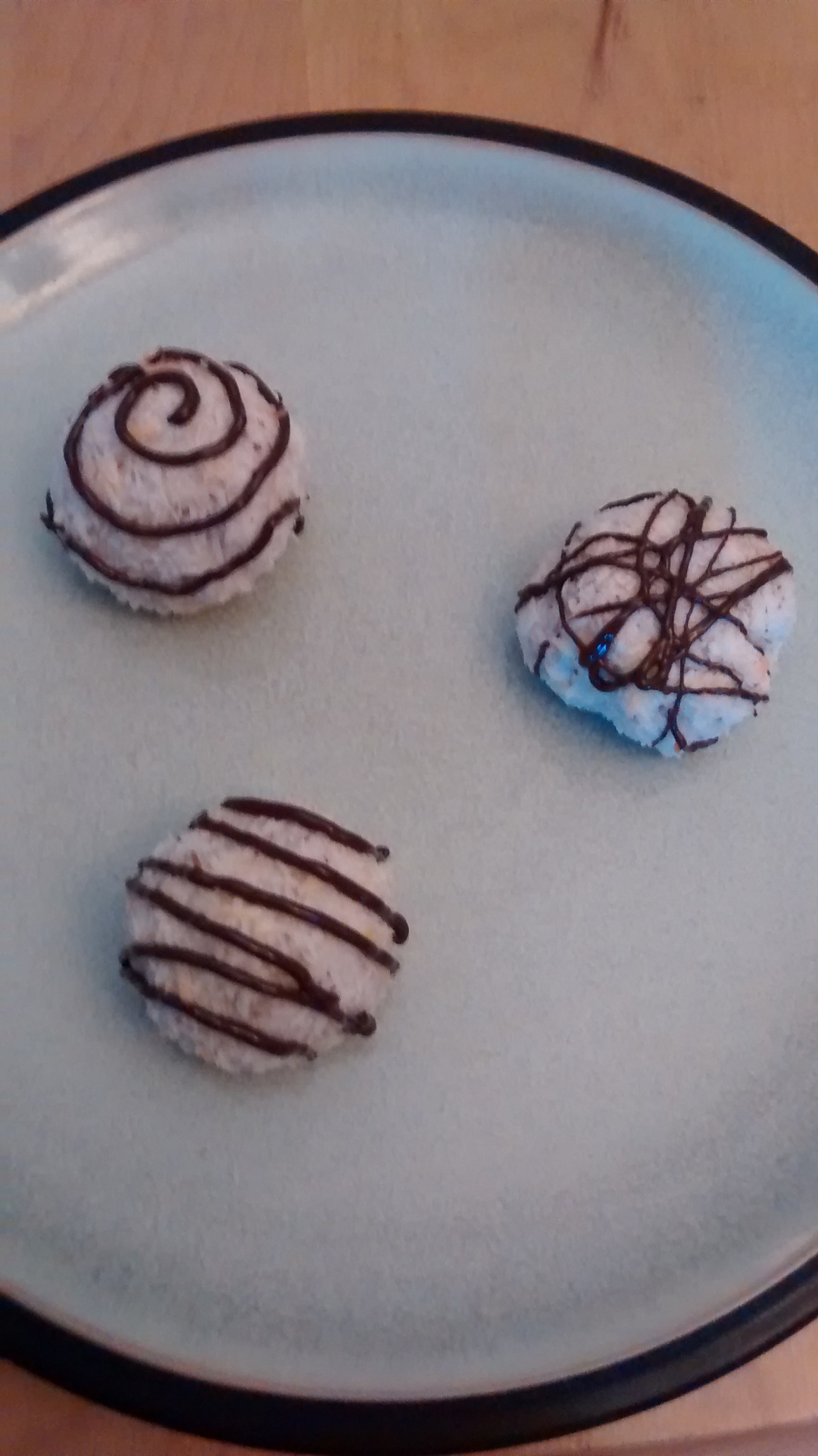Sometimes, a baking experiment really goes wrong, and there’s nothing you can do. I always feel awful having to get rid of batter or baked goods that just didn’t come out properly. It always seems so wasteful.
But sometimes, a baking experiment goes wrong and it’s completely salvageable, and it creates something new and delicious.
From the featured image for this post, you might think I was trying to make macaroons (the coconut cookies with two ‘o’s in the name), and that I simply mistyped my title for this post. Confusingly, what I was actually trying to make were coconut macarons (a nut-free version of the sandwich cookies that are usually made with almond flour).
Some of you have probably read about my past experiences with nut-free macarons, and I felt like I finally got the hang of macaron making. I had some coconut flour leftover from a previous baking experiment (low-carb scones), so I thought it would be fun to try to replace the almond flour with coconut flour. And, luckily for me, I found a recipe on Youtube that did exactly that.
My first mistake was trying to halve the recipe. Ever tried beating just one egg white? It’s very difficult to get the beaters deep enough in the egg white to get it up to a stiff peak consistency, so I was left with a fluffy egg sludge at the end of this (perhaps I could have whipped my egg whites in a smaller container, but I was thinking ahead to all the flour and icing sugar that needed to be folded in, and I chose a medium sized bowl).
So after failing with my egg whites, I decided to just do the whole recipe. I measured out the rest of my coconut flour and added additional powdered sugar. I was just 1 tbsp short of coconut flour at this point, so I added 1 tbsp of ground flax seed instead. This has worked out alright in the past when I was low on pumpkin seeds, so I thought it was worth a try.
Now, this is where I should have read the comments on the Youtube video. It looks like a lot of people had their batter turn out too dry, and mine was no exception. It looked ok after I’d added about half of the coconut flour and icing sugar mixture, but when I added the second half, it turned into a crumbly mess!
Here’s what I think went wrong: using coconut flour from a bag. It sounds silly, since the entire point of the recipe was to use coconut flour, but bear with me here. What’s really important to know about coconut flour is that it soaks up a lot of moisture. A whole lot of moisture. When you bake gluten-free goods with coconut flour, you often have to add extra eggs and extra liquid because the coconut flour takes so much moisture out of your batter. After my macaron batter turned out too dry, I went back to the video, and I noticed that it has a link showing you how to make your own coconut flour from dried coconut. And, more importantly, the thumbnail to this video shows coconut flakes that are being soaked in water before they are blended to form a flour. So my theory is that the recipe was created for coconut flour that was made this way, and the soaking process meant that the coconut flakes had already soaked up water, and therefore didn’t take all the moisture out of the macaron batter.
If I had to try this again, I might try it with half of the coconut flour (the ratios in this recipe were 2 egg whites, 1/4c granulated sugar, 1c icing sugar, and 3/4c coconut flour, so I might try either with the homemade coconut flour, or with 3/8c coconut flour instead). The batter actually looked pretty good after I added half of the coconut flour and icing sugar mixture, so reducing the coconut flour might be key.
At that point, I’d already messed up my first egg white and now I had this outrageously thick macaron batter. I obviously couldn’t make macarons at this point, so I decided to try something a little closer to a macaroon in appearance. I started by folding in the failed egg whites in an attempt to make the batter slightly less crumbly (this was also a great way to avoid wasting my failed egg whites). I took scoops of the batter using an ice cream scoop, which gave me about 1/8c of batter, and rolled the batter into small balls using wet hands. I then rolled the balls in some unsweetened flaked coconut, and placed them on a baking tray. At this stage, my cookies looked like this:

Since these were so much larger than a macaron, I decided to cook at a hotter temperature. I set my oven to 350 F and baked for around 12-13 minutes. At this point, the coconut on top started to brown slightly. To finish them off, I melted and drizzled some chocolate (up to this point, these had no dairy in them, so for a fully dairy-free experience, I’d recommend leaving off the chocolate or replacing with a dairy-free chocolate). Just for fun, I did three different patterns, first, a simple zig-zag across the cookie:

Then I tried out a swirl on a few cookies:

And finally, I let loose with some Jackson Pollock action:

In terms of flavour, these actually turned out really well, though they are a little bit too sweet. I think that comes partly from the added sugar from my failed egg white (I’d already added 1/8c of sugar by the time I realized the eggs just wouldn’t hit a stiff peak consistency). On its own, that’s not much sugar, but keep in mind this recipe already has 1 cup of icing sugar and 1/4 cup of granulated sugar, without any bitter additives (i.e. cocoa powder or lemon zest) to combat the sweetness. But overall, I think this baking mistake has some promise for a good nut- and dairy-free cookie, with a few tweaks to make them a little less sweet and a little more moist.
Here’s a look at all three designs together:

So, fellow bakers – have you ever had a baking disaster that turned out surprisingly well? Or do you prefer to start again and get your intended recipe perfect?

